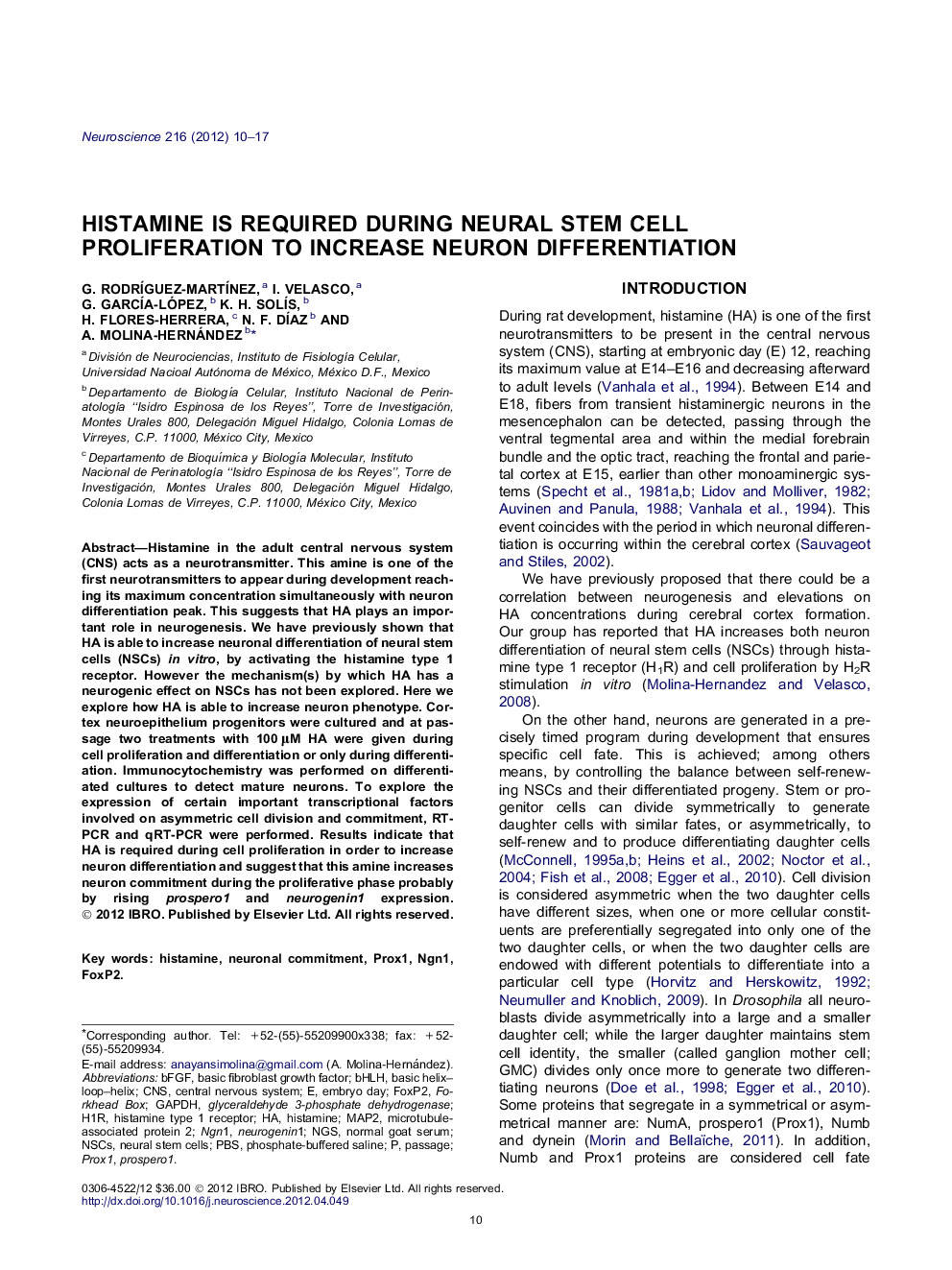| Article ID | Journal | Published Year | Pages | File Type |
|---|---|---|---|---|
| 4338393 | Neuroscience | 2012 | 8 Pages |
Histamine in the adult central nervous system (CNS) acts as a neurotransmitter. This amine is one of the first neurotransmitters to appear during development reaching its maximum concentration simultaneously with neuron differentiation peak. This suggests that HA plays an important role in neurogenesis. We have previously shown that HA is able to increase neuronal differentiation of neural stem cells (NSCs) in vitro, by activating the histamine type 1 receptor. However the mechanism(s) by which HA has a neurogenic effect on NSCs has not been explored. Here we explore how HA is able to increase neuron phenotype. Cortex neuroepithelium progenitors were cultured and at passage two treatments with 100 μM HA were given during cell proliferation and differentiation or only during differentiation. Immunocytochemistry was performed on differentiated cultures to detect mature neurons. To explore the expression of certain important transcriptional factors involved on asymmetric cell division and commitment, RT-PCR and qRT-PCR were performed. Results indicate that HA is required during cell proliferation in order to increase neuron differentiation and suggest that this amine increases neuron commitment during the proliferative phase probably by rising prospero1 and neurogenin1 expression.
► Histamine is required during cell proliferation to enhance neuron differentiation. ► During cell proliferation histamine increases asymmetric cell division. ► During cell proliferation histamine increases Prox1 and Ngn1 expression. ► Histamine increase FoxP2 neuron differentiation from neural stem cells.
